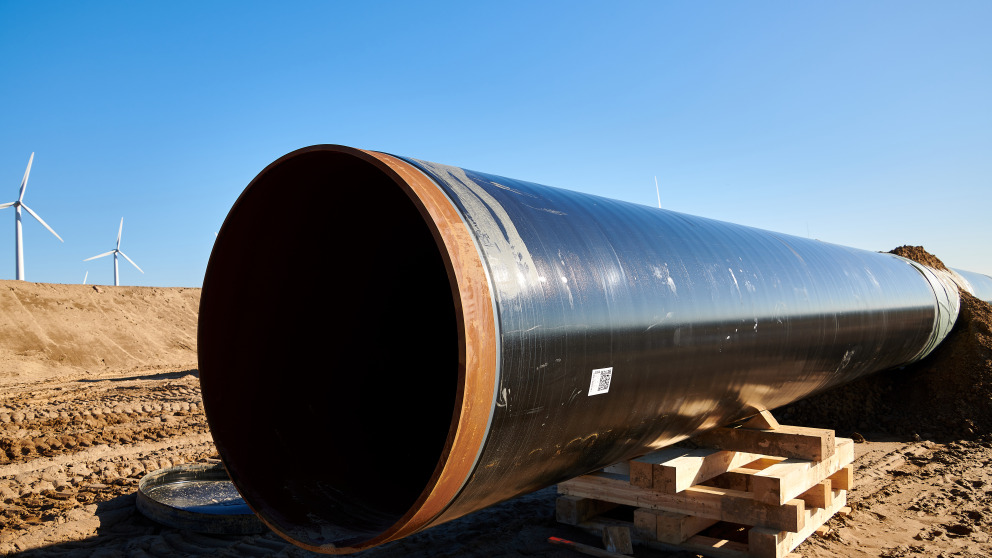Infrastructuring Environmental (In)Justice: On the Political Geographies of Energy Technologies in Planetary Crises
06.03.2023

The ambivalent role of material infrastructure (and especially large-scale energy technologies) in planetary crises has attracted increasing scholarly attention in recent years. I tackled this issue in January’s Justice in Sustainability lecture (you can watch it in full here).
On the one hand, fossil fuel infrastructures such as oil and gas pipelines, coal mines and power plants are widely seen as the “production mills of the Anthropocene” (A. Esguerra), as they contribute substantially to CO2 emissions and ecosystem destruction. Regardless of their actual potential for mitigating climate change, the expansion of renewable energies is likewise criticized for going hand in hand with “infrastructural colonization”, and “environmental load displacement”, that is, the destruction and colonization of landscapes and ecosystems, as well as the appropriation of land and low-wage labor, often in peripheral regions. On the other hand, the transformation and creation of energy technologies and infrastructures can be important political leverage points for socio-ecological change, as they enable people to do things (e.g. producing and consuming energy) more sustainably and democratically. Case studies of community renewable energy projects around the world, for example, show how small-scale and decentralized energy initiatives, despite their manifold constrains, challenge dominant and often undemocratic energy systems and create alternative visions for a sustainable energy future from the bottom up. Under certain conditions, renewable energy infrastructures can therefore also be understood as promises, as possible starting points for the redistribution of political power and re-democratization.
Originating from this paradoxical characterization, I discussed three interrelated theses: The first is that mainstream decarbonization strategies are embedded in policies of ecological modernization and technological control that produce and reinforce environmental injustices and risk depoliticizing debates around planetary futures. Especially technology-based approaches such as green and blue hydrogen, which are associated with a massive rollout of energy infrastructure, risk diverting attention away from urgently needed systemic changes that are required for justice. Moreover, the social injustices and environmental loads upon which they depend often remain obscure, prompting calls for a more critical research agenda on this emerging economy. The second thesis is that infrastructure as a research object, and even more clearly as a conceptual lens, i.e. as a specific research perspective, offers promising insights into the justice dimensions of sustainability politics and its political geographies. Particularly the notion of ‘infrastructuring’, originating from Science and Technology Studies and Anthropology, which refuses to approach infrastructure as an inert ‘thing’, enables researchers to reconceptualize infrastructures as a power laden social practice and dynamic relationship between human and non-human actors and agencies.
Finally, the third point I made is that infrastructures are not only sites of conflict and injustice, but that they also have a transformative power to bring about social change, contribute to environmental justice and new forms of cooperation. In this regard, political theorist Bonnie Honig and decolonial anthropologist Arturo Escobar provide important insights. Whereas Honig´s democratic theory of ‘public things’ helps to demonstrate that public infrastructure such as roads, libraries and energy technologies, is indispensable for democracy and civic cooperation, Escobar emphasizes the transformative and ‘world-making’ power of designing practices. Particularly his idea of ‘autonomous design’ demonstrates that through collaborative and experimental practices of designing infrastructures, marginalized and colonized communities are enabled to regain self-determination and to create new, decolonial worlds.
As an outlook, I concluded my presentation with some reflections and possible examples of convivial energy infrastructures from the North American context. At its most basic, convivialism – which is both a political philosophy and a lived practice – opposes the logics of neoliberalism and the human hubris of controlling nature. In contrast, it emphasizes the unavoidable interdependence between human and non-humans and the importance and necessity of collaboration. In this sense, convivial infrastructures such as the Solutionary Rail Initiative or Indigenous-led renewable energy projects are infrastructures that enable alternatives to the sustainability pathways of ecological modernization and of political and technological control. Moreover, they bring into being new alliances and forms of cooperation that aspire to advance self-determination and environmental justice.
Media
Benno Fladvad: Infrastructuring environmental (in)justice

